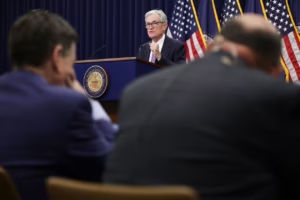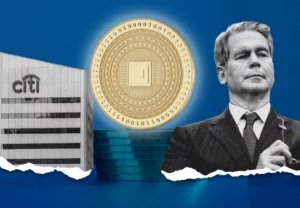The numbers: In April, the cost of living hardly increased, and the rate of inflation decreased even further toward pre-pandemic levels. However, while the trade battles continue, it is uncertain if the recent gains can be maintained.
The Bureau of Economic Analysis said on Friday that the PCE index, the Fed’s preferred inflation indicator, increased by a meager 0.1% last month. In April, there was no inflation.
The consecutive months’ inflation figures were the lowest since the 2020 pandemic.
In the meantime, the 12-month inflation rate dropped from 2.3% to 2.1%, matching the lowest level since the epidemic.
Last September, the inflation rate reached 2.1% before declining once more.
The Fed is not far from the long-term goal of the U.S. central bank, which is to lower the annual inflation rate to 2%. However, as the effects of the tariffs spread across the economy, many Wall Street economists and top Fed officials believe that prices may increase a little more quickly over the summer.
A recent White House tariff easing and two court rulings this week that the president lacked the power to apply the majority of the penalties could help control inflation.
However, the legal disputes might take some time to resolve, and the White House might look for alternative ways to increase tariffs.
Important information: The so-called core rate of inflation increased by just 0.1% last month when food and energy are excluded. That was yet another encouraging indicator.
Core inflation fell from 2.6 percent to 2.5 percent annually. It’s the lowest since the beginning of 2021.
The Fed considers the PCE, officially known as the personal-consumption expenditures price index, to be the most accurate indicator of future inflation patterns.
Because food and energy prices frequently fluctuate and might skew the headline figure, the central bank pays particular attention to the core gauge.
Big picture: Although inflation has approached the Fed’s 2% target, there is now a greater chance that prices may rise in the near future, albeit only momentarily.
Why? American businesses that import goods pay tariffs. Businesses can try to negotiate lower pricing with overseas suppliers, but if that doesn’t work, they’ll either have to hike prices for American consumers or accept reduced earnings.
Depending on what the White House does next, the recent reduction in U.S. tariffs and the court rulings against the Trump administration may be helpful.
Considering the future: In a note to clients, CIBC Capital Markets economist Ali Jaffery stated, “We all might have been impressed by the resumption of inflation progress and the return of headline inflation to target if there hadn’t been a trade war going on.”
“Today’s data and the unpredictability of trade policy in Washington will reinforce the Fed’s desire to wait things out,” he stated. “Inflation enters the trade war in decent shape and the economy looks robust.”
Market response: Following Trump’s accusation that China was breaking trade deals, the Dow Jones Industrial Average and S&P 500 were expected to drop during Friday’s trading.
The 10-year Treasury note’s yield (BX:TMUBMUSD10Y) gradually increased to 4.4%.





